
Gleditsia is a genus of trees in the family Fabaceae, subfamily Caesalpinioideae, native to the Americas and Asia. The Latin name commemorates Johann Gottlieb Gleditsch, director of the Berlin Botanical Garden, who died in 1786.

The Caspian seal is one of the smallest members of the earless seal family and unique in that it is found exclusively in the brackish Caspian Sea. It lives along the shorelines, but also on the many rocky islands and floating blocks of ice that dot the Caspian Sea. In winter and cooler parts of the spring and autumn season, it populates the northern Caspian coastline. As the ice melts in the summer and warmer parts of the spring and autumn season, it also occurs in the deltas of the Volga and Ural Rivers, as well as the southern latitudes of the Caspian where the water is cooler due to greater depth.

The western barbastelle, also known as the barbastelle or barbastelle bat, is a European bat in the genus Barbastella. This species is found from Portugal to Azerbaijan and from Sweden to Canary Islands, where a sub-species was identified. It has a short nose, small eyes and wide ears. The conservation status of B. barbastellus is assessed as "near threatened", "vulnerable", "critically endangered" or "extinct" in various parts of its range.

The Caspian turtle, also known as the striped-neck terrapin, is a species of turtle in the family Geoemydidae (=Bataguridae). It is found in the eastern Mediterranean region from southwestern former USSR and central Iran to Saudi Arabia, Bahrain, Israel, and Lebanon, northward through Turkey to Bulgaria, and through Cyprus, Crete, and the Ionian Peninsula to former Yugoslavia.

The wildlife of Azerbaijan consists of its flora and fauna and their natural habitats.

The desert long-eared bat is a species of vesper bat found in North Africa and the Middle East.

The Arabian barbastelle, also known as the levant barbastelle, is a species of vesper bat. Its habitat is temperate forests and caves. It is threatened by habitat loss. It is found in Egypt (Sinai), Israel, and Eritrea.
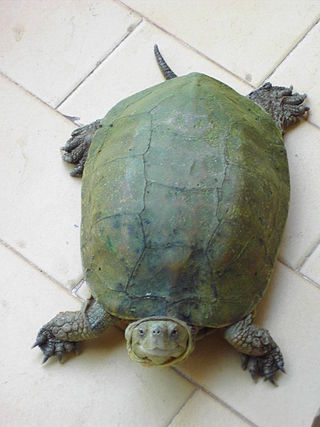
Mauremys is a genus of turtles in the family Geoemydidae.

The Agreement on the Conservation of Populations of European Bats, or EUROBATS, is an international treaty that binds its States Parties on the conservation of bats in their territories. It was signed in 1991 under the auspices of the Convention on the Conservation of Migratory Species of Wild Animals (CMS), with the Agreement entering into force in 1994. In August 2021, the Agreement applied to 38 of 63 range states.
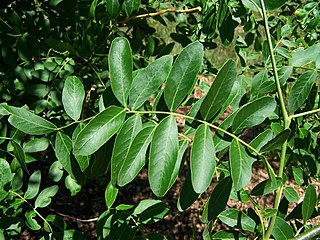
Gleditsia caspica, the Caspian locust or Persian honeylocust, is a species of Gleditsia native to western Asia, in the Caucasus region of Azerbaijan and northern Iran, close to the Caspian Sea.

The Vespertilioninae are a subfamily of vesper bats from the family Vespertilionidae.

Barbastella is a genus of vespertilionid bats. There are seven extant species in this genus and one only known from fossil remains.

The Caspian shrew is a species of mammal in the family Soricidae. It is found along the southern coast of the Caspian Sea in Iran and Azerbaijan.
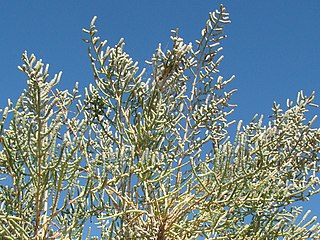
Halostachys is a genus of flowering plants in the plant family Amaranthaceae, containing a single species, Halostachys caspica. The plants are small to medium halophytic shrubs with apparently jointed fleshy stems and scale-like leaves. They are native to Asia and southeastern Europe.
The Beijing barbastelle, also known as the Beijing wide-eared bat, is a species of vesper bat endemic to Beijing Municipality, China. The species was discovered by Chinese zoology students in 2001 in caves of Fangshan District in southwestern Beijing and was identified as a distinct species by zoologists Zhang Shuyi, Gareth Jones, Zhang Jingshuo and Han Naijian in 2007.
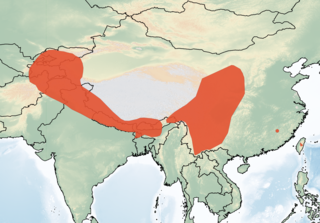
The eastern barbastelle or Asian barbastelle is a species of vesper bat found throughout much of Asia, from Afghanistan to Taiwan.
Salix caspica is a plant from the willow genus (Salix) within the willow family (Salicaceae). The natural range extends from eastern European Russia to far western China.
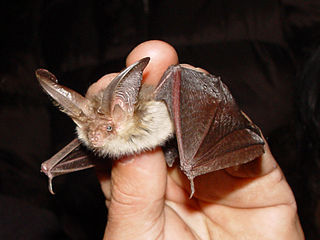
Plecotini is a tribe of bats in the family Vespertilionidae. It contains several genera found throughout the Northern Hemisphere, in Eurasia, North Africa, and North America. Several genera in this tribe are known as big-eared bats or long-eared bats. It also contains the spotted bat and barbastelles.















